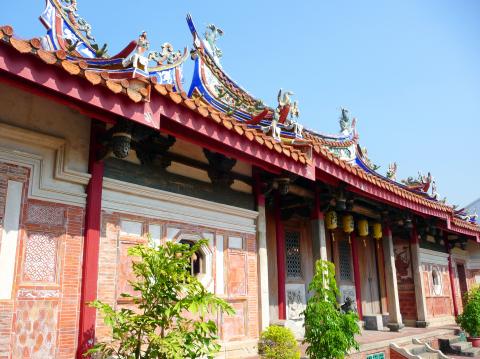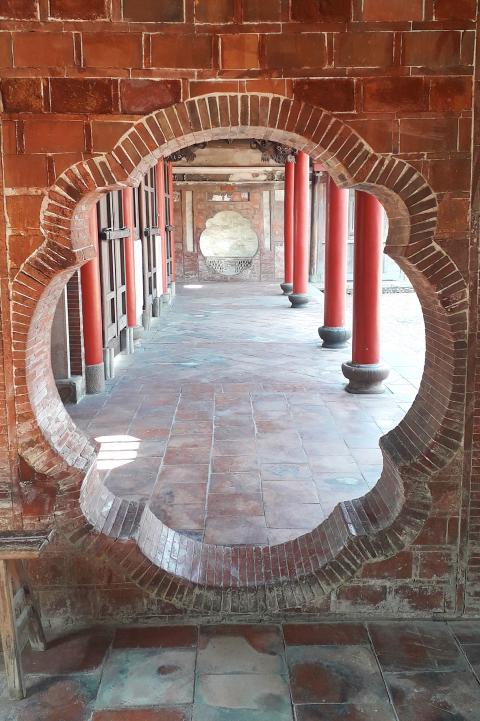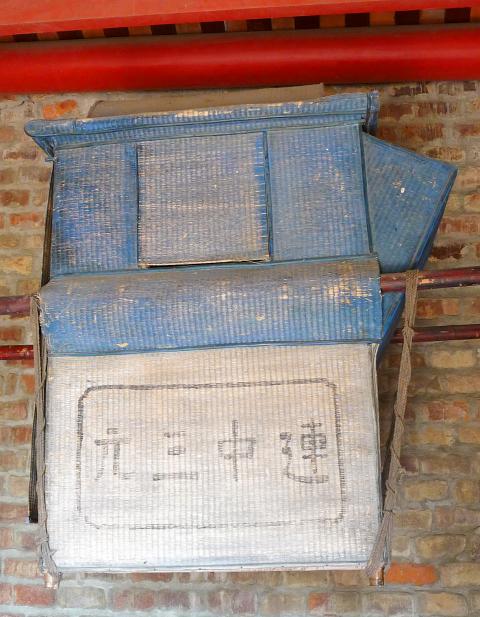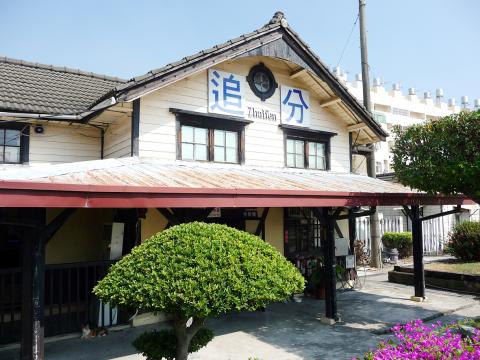The Chinese logographic writing system is one of the most ancient in the world, and according to the Encyclopaedia Britannica, until the 18th century, over half of the world’s books were written in Chinese. Mass literacy is a recent thing, however.
In her 1979 book, Education and Popular Literacy in Ch’ing [Qing] China, Evelyn Rawski writes that “the large number of potential teachers and the widespread distribution of private schools… suggests that [in the mid and late-19th century] 30 percent to 45 percent of the men and from 2 percent to 10 percent of the women in China knew how to read and write. This group included the fully literate members of the elite and, on the opposite pole, those knowing only a few hundred characters. Thus loosely defined, there was an average of almost one literate person per family.”
Taiwan was part of the Qing Dynasty after 1684, and it’s hard to say if the literacy rate on the island would have been higher or lower than in other parts of the empire. When the Japanese took control of Taiwan in 1895, the population was approaching three million. If 100 students graduated per year from each of the 60-odd tutorial academies which had been founded across the island over the previous three centuries (none of them were as big as modern-day schools), it’s hard to see how the overall literacy rate could have exceeded 10 percent in the 1890s.

Photo: Steven Crook
By comparison, Robert Houston (a professor of history at Scotland’s University of St Andrews) has written: “By 1800, a majority of adults in northwestern Europe were literate [but] it was not until the 1940s that more than half of Portugal’s population could read and write.”
Before a network of modern schools was established in the 20th century, most of the formal education that took place in Taiwan happened in institutions like Taichung’s Huangsi Academy (磺溪書院).
Construction took almost three years and was completed in 1890. The academy soon became a key center of learning serving Dadusiabao (大肚下堡), an administrative division that existed in the late Qing and early Japanese periods, and which encompassed parts of the current districts of Dadu (大肚), Longjing (龍井), and Wuri (烏日).

Photo: Steven Crook
Later on, the academy’s fortunes were mixed. The Japanese soldiers billeted here took good care of the building, and in 1935 the colonial authorities recognized it as a site of historical and cultural importance. However, as a result of neglect and the theft of artifacts, by the 1970s it was an utter wreck. Flooding was also a problem; the academy is 1.4km east of the Dadu River (大肚溪) which separates Taichung from Changhua County.
In the early 1980s, local worthies began lobbying the government to restore the academy. Noted architect Han Pao-teh (漢寶德, 1934–2014) — later founding president of Tainan National University of the Arts and first curator of the Museum of World Religions — was engaged to survey the ruins.
Between 1984 and 1989, NT$14.9 million was budgeted for rebuilding and renovation work. Looking at the academy now, it was money well spent. I hadn’t planned on stopping here during a bike ride from Longjing to Dounan (斗南), but — as I always try to avoid busier roads — I ended up on Wenchang 1st Street (文昌一街) in Dadu.

Photo: Steven Crook
Huangsi Academy is at number 10, and its gorgeous appearance stopped me in my tracks. When I looked at the information panel in front of the building, the penny dropped. I’d heard about this place, but none of the photos I’d seen had made it look half as alluring as it was that sunny November day.
The true beauty of this uncluttered landmark lies in its bricks and tiles, perhaps because so many of its fittings were pilfered. Or maybe it’s because the rescue was completed a full three decades ago; some weathering has taken place. Certain restored relics are so shiny and perfect that visitors can be excused for thinking they’re looking at a replica rather than a renovated original — but not this one.
If you come here, do take a close look at the old photos displayed in the side chambers. Several show the shocking state of the building before it was saved from further dilapidation.

Photo: Steven Crook
One of the few artifacts on display is a small palanquin which bears the characters lian zhong san yuan (連中三元). These words referred to scholars who got top grades in all three levels of the examinations through which men sought appointments in the imperial civil service. In China’s long history, a mere 17 individuals achieved this.
After soaking up the academy’s Taiwan-before-Japanese-colonization atmosphere, I moved down the road to a structure that’s typical of the period after Qing rule.
The Japanese rapidly expanded Taiwan’s rail network, but only a few of the stations they built are still standing. One of the exceptions is Jhueifen (追分), nearly 5km southeast of Huangsi Academy.
The two-floor station building is largely wooden, and the clapboard sides are painted a pale yellow. In my eyes, it’s not nearly so captivating as the academy, but while I was there a minibus full of photography enthusiasts arrived, and they were still taking pictures when I left.
I think the station’s name is more intriguing than its design. The nearby elementary school and police station are also called Jhueifen, but this isn’t a conventional toponym. In fact, Jhueifen derives from a Japanese term which describes the splitting of railway tracks.
About 900m east of the station, one railroad veers southward into Changhua County. The other leads to Chenggong TRA Station (成功火車站) and then New Wuri TRA Station (新烏日火車站), where the conventional rail network integrates with the high-speed railway.
Steven Crook has been writing about travel, culture, and business in Taiwan since 1996. He is the co-author of A Culinary History of Taipei: Beyond Pork and Ponlai, and author of Taiwan: The Bradt Travel Guide, the third edition of which has just been published.

On April 26, The Lancet published a letter from two doctors at Taichung-based China Medical University Hospital (CMUH) warning that “Taiwan’s Health Care System is on the Brink of Collapse.” The authors said that “Years of policy inaction and mismanagement of resources have led to the National Health Insurance system operating under unsustainable conditions.” The pushback was immediate. Errors in the paper were quickly identified and publicized, to discredit the authors (the hospital apologized). CNA reported that CMUH said the letter described Taiwan in 2021 as having 62 nurses per 10,000 people, when the correct number was 78 nurses per 10,000

May 5 to May 11 What started out as friction between Taiwanese students at Taichung First High School and a Japanese head cook escalated dramatically over the first two weeks of May 1927. It began on April 30 when the cook’s wife knew that lotus starch used in that night’s dinner had rat feces in it, but failed to inform staff until the meal was already prepared. The students believed that her silence was intentional, and filed a complaint. The school’s Japanese administrators sided with the cook’s family, dismissing the students as troublemakers and clamping down on their freedoms — with

As Donald Trump’s executive order in March led to the shuttering of Voice of America (VOA) — the global broadcaster whose roots date back to the fight against Nazi propaganda — he quickly attracted support from figures not used to aligning themselves with any US administration. Trump had ordered the US Agency for Global Media, the federal agency that funds VOA and other groups promoting independent journalism overseas, to be “eliminated to the maximum extent consistent with applicable law.” The decision suddenly halted programming in 49 languages to more than 425 million people. In Moscow, Margarita Simonyan, the hardline editor-in-chief of the

Six weeks before I embarked on a research mission in Kyoto, I was sitting alone at a bar counter in Melbourne. Next to me, a woman was bragging loudly to a friend: She, too, was heading to Kyoto, I quickly discerned. Except her trip was in four months. And she’d just pulled an all-nighter booking restaurant reservations. As I snooped on the conversation, I broke out in a sweat, panicking because I’d yet to secure a single table. Then I remembered: Eating well in Japan is absolutely not something to lose sleep over. It’s true that the best-known institutions book up faster